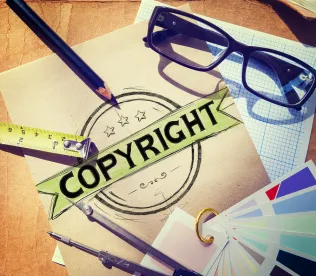Texas A&M University's "12th Man" is at the center of a legal blitz facing the University's Athletic Department. On January 19, 2017, Michael J. Bynum and his publisher, Epic Sports, filed a copyright infringement suit against the Texas A&M Athletic Department, three university employees, and the university's athletic booster organization, the Texas A&M University 12th Man Foundation, for allegedly posting a copy of a written account of the Texas A&M "12th Man" story on the Athletic Department's website without permission. (Bynum v. Texas A&M University Athletic Dept., No. 17-00181 (S.D. Tex. filed Jan. 19, 2017)). A&M has responded with a gadget play of sorts to hold off the legal rush.
According to Texas A&M lore, the "12th Man" tradition was inspired by an individual named E. King Gill, whose actions during the 1922 "Dixie Classic" football game between A&M and the undefeated Centre College came to symbolize the university's devotion to unity and service. The game was not going well for the Aggies, and several of the team's players had been knocked out of the game because of injuries. Gill, a practice squad player watching from the stands, was called down to the sidelines by Coach Dana X. Bible and asked to suit up. Ever-ready to serve his team, Gill quickly changed into his teammate's uniform and returned to the sideline, where he remained standing for the rest of the game, as the only player left on the team's bench (hence, the "12th Man," as there are 11 football players on each side during play). Not only did Gill display an unbridled willingness to serve his team, but the Aggies also ended up miraculously winning the game 22-14, giving rise to the "12th Man" legend.
In an amended complaint, Bynum claims that the Athletic Department copied a written biography of E. King Gill and published "a pirated version" without Bynum's authorization, under the title "The Original 12th Man," on the Texas A&M Athletics website.
Bynum contends that several years earlier he commissioned sports author Whit Canning to write the biography to be included in Bynum's book about Gill and the history of the "12th Man" tradition, thus giving Bynum copyright ownership of the Gill biography under the work made for hire doctrine. According to the complaint, Bynum sent a copy of the unpublished 5,000-word biography to the Texas A&M Athletic Department in June 2010 "for the limited purpose of fact-checking, to locate certain additional photos for the book, and an option to purchase copies for alumni." However, the university elected not to purchase any copies, and Bynum did not license any copyrights to the university. After sitting idle in a file drawer for four years, the biography was ultimately found and posted on the A&M Athletics website during a stadium fundraising drive and subsequently promoted on the University's Twitter account, giving sole credit to Canning. Several days later, after receiving a note from Bynum, the post containing the Gill biography was taken down—the bio had been on the Athletic Department's website for only 72 hours.
In his lawsuit, Bynum asserted direct copyright infringement claims against the Texas A&M Athletic Department and its individual employees based upon the alleged unauthorized copying and profiting off of the Gill biography, and contributory infringement claims against the Athletics Department and the Texas A&M 12th Man Foundation for allegedly inducing and assisting others to copy and distribute the infringing copy of the biography.
Calling an audible that departs from more typical copyright infringement defenses (e.g., fair use, lack of valid copyright), the university's goal line defense centers around two forms of immunity afforded to public officials (Texas A&M is a public university). In its motion to dismiss the claims, the university argues first that the Athletic Department cannot be sued in its individual capacity because it is an unincorporated division within the larger university. The defense argues that "the institutional structures and controls…do not permit the conclusion that the Texas A&M Athletic Department is an entity separate from the University, capable of being sued in its own right," and thus dismissal is warranted. The University points out that even if the court could substitute the correct party —Texas A&M—dismissal is still the correct result because Texas A&M, as a state university, enjoys sovereign immunity from suit and it believes that, absent waiver by the state or congressional override, none of the copyright or related claims can be pursued against a state entity in federal court under the Eleventh Amendment.
Next, the University argues that Bynum's claims against the Athletic Department and university employees involved in the posting of the biography are barred by sovereign immunity under Texas state law. Generally speaking, sovereign immunity deprives a court of subject matter jurisdiction for suits where the state or governmental entity has been sued unless the state consents to the suit (e.g., the Texas Tort Claims Act proves a limited waiver of sovereign immunity). In the University's view, while the Texas statute permits a limited number of claims to be advanced against state agencies, "immunity will be extended to individual state employees who act within the course and scope of their employment." In support of this assertion, the defense cites the fact that all of the alleged activities of the employees were done at the direction of and for the benefit of the university, thus falling within the scope of the state's sovereign immunity.
Joining the halftime parade of motions, the Texas A&M University 12th Man Foundation also moved to dismiss the action, arguing that Bynum's claims against the Foundation are but "bare legal conclusions." Citing a lack of factual support for the allegations and a lack of concrete evidence of the Foundation's knowledge of the alleged infringement, as well as the minimal discussion of the Foundation in the complaint (the Foundation claims that it is only mentioned by name three times in the 18-page complaint), this defendant contends that their inclusion in this suit is far afield. In response, Bynum argues that he has alleged sufficient facts that connect the actions of the Foundation to the infringement claims, and it would not be "facially implausible that the Foundation worked in concert with the A&M Athletic Department to solidify Texas A&M's ownership of the '12th Man' and ultimately infringe Plaintiffs' copyright."
The Aggies are known for their high-powered offense on the field and here, to avoid getting sacked by a large damage award, they have mounted a strong defense. It is very possible that A&M's unconventional defensive scheme may throw Bynum off guard and secure a quick victory for the Athletic Department—but if not, both sides appear willing to grind it out for four quarters and leave it all out on the field to protect the legacy of the 12th Man.








 />i
/>i
